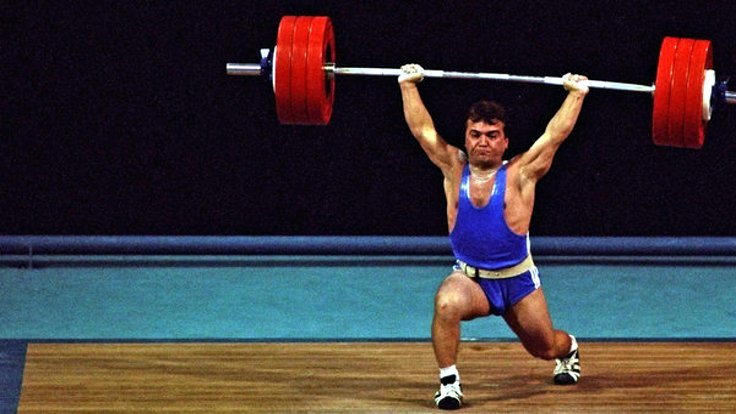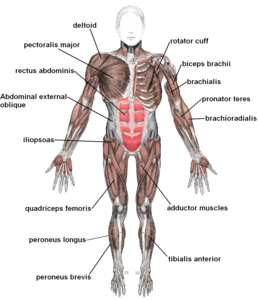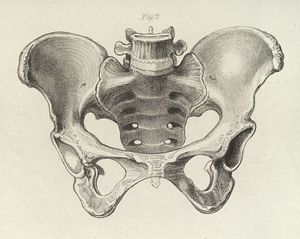WHAT?
Learn the topic.
How do you build relative strength? For those of you involved in the strength community, you may be familiar with the term. For others new to lifting, have you ever wondered why that one person at the gym who hardly seems to look like they exercise, can be so damn strong?
The answer – relative strength.
Relative strength refers to the amount of force one can produce relative to their body weight/size. It’s a staple aspect of strength and conditioning as well as a method of determining the elite within the world of powerlifting.
Measurement
The traditional and probably simplest method of calculation comes from dividing the weight lifted by your body mass (e.g. 200kg back squat for a 100kg lifter = 2.0x bodyweight).

Strength sports such as powerlifting and weightlifting also have their own methods of calculating who is deemed the strongest with the Wilks Score and the Sinclair Formula respectively.
What is it Good for??
- Weight Categorised Sports
Many sports aim to level the competition playing field by standardizing as many variables as possible (such as equipment, supplement usage) and more applicably – body weight. It would hardly be fair putting a light weight against a heavy weight.

There are also a few sports in which people are scored based off aesthetic appearance and performance and although not stated in the rule book, can be marked down if they appear to muscular (e.g. women’s gymnastics).
- “I don’t want to be Bulky”
Despite it’s popularity, there are many among us who simply don’t want to increase their muscle mass and happy with the way they are. However, that doesn’t mean they should neglect the benefits to be brought by strength.

Furthermore, even when you’re aiming to be big and strong, many people excuse poor eating habits (I was a victim of this myself), poor nutritional choices with regards to food quality and laziness (in a bid to “save energy”) all for the greater good of gaining weight and being “strong”. However, you can go too far the other way, with your quest for size and strength, ultimately leading you to destination type II diabetes.
- Stand out
Let’s face it, nowadays its not that rare to see someone who is overly muscular or just generally a big guy (or girl). With food being more accessible than ever, gaining size is becoming easier year on year, despite what many people claim.
However, it’s much rarer to see someone who is head-turningly strong with the size they possess. It’s also even less common to see people who don’t even pursue gains in muscle, to be inordinately strong.
Be the person who walks into the gym, and makes heads turn with the physical feats of strength you can display, not just because you look good in your “2 sizes too small muscle vest” or compression top.
WHY?
Learn the science and theory.
Specific Tension
When diving into muscle tissue on a histological level and isolating individual muscle fibres (or in other words, when nerding out), we come across something known as specific tension. Without going into too much detail today, it refers to the maximal force production of a single muscle fibre when normalised to the size of the muscle, and can be calculated as just that:
– Specific Tension = maximal muscle force/muscle cross sectional area (‘size’)
Research has shown a potential increase in specific tension in response to training (6, 7), with this also occurring in the absence of muscle growth (14, 15).
So the fibres CAN get stronger despite not getting bigger.
But wait…when looking into these findings, three key precautions should be taken:
- Improvements are largely individual. This is true for almost every physiological response to exercise, but the research has highlighted a pretty large “inter-individual effect” (6) when it comes to this phenomenon.
- Most participants were previously untrained. Changes in the nervous system are much bigger and faster than changes in muscle mass, which may exaggerate the changes found.
- It’s all relative: when muscle size grows, the specific tension remains relatively unchanged and may actually decrease. So specific tension shouldn’t be the end all, be all measurement of relative strength, or even be the key mechanism behind it.
Just to make it even more confusing, there is also research showing that for relative strength to increase, specific tension doesn’t necessarily have to change at all (5). And therefore, can’t be the primary driver behind increased relative strength, with research showing experienced lifters to display no greater specific tension than untrained people (19).
This is where things get really interesting…
Normalised Muscle Force
This refers to the force production of a whole muscle relative to it’s size, as oppose to single muscle fibres. This aspect of relative strength does indeed increase in response to training almost all of the time (1, 21).
Now. You may be confused.
I sure as hell was.
How the hell can you increase your relative strength (i.e. become stronger without increasing muscle size), if the muscle fibres individually don’t have to get relatively stronger?
4 Reasons for Superhuman Strength
1) Lateral Force Transmission between fibres
This is probably the nerdiest section. So if you’re ready, let’s dive in.
Following training, research has shown that muscle fibres may form newer lateral connections between muscle fibres and tendons (in a lateral/diagonal fashion), with up to 80% of the contractile force of muscle fibres capable of being transferred to surrounding connective tissue (17). This allows for more of the contractile force generated by individual muscles to act on the tendons and therefore, generate movement and lift weight (10).
This is supported by studies such as this one, showing a 17% increase in normalized muscle force (i.e. relative strength) with no change whatsoever in muscle size or specific tension.
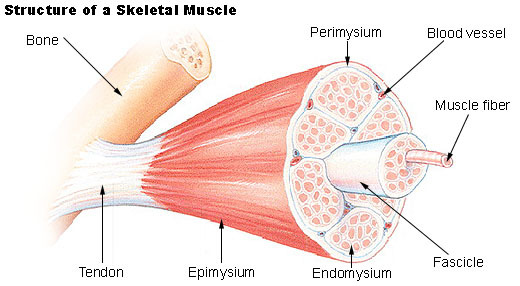
2) Force Transmission between muscles
Although we knew myofascia existed, it was previously known to be more of a “protective layer” sheathing the more important muscle tissue underneath. However, the past decade or so has shown myofascial tissue to play a more active role in transferring force throughout the body from one muscle to another.
For example, research has shown that stiffening the thoraco-lumbar fascia by activating the lats, enhances the activation of the glutes (4). This also works in the opposite direction, with contracting you’re a** helping your pullup strength.
This will be covered in more detail in future, but contrary to the stone age understanding of the body, we humans are tensile structures with muscles pulling on other muscles, not just on the bones (12).
3) Stronger Tendons and Denser Muscles
Tendons – Connective tissue is the key of translating muscle force, into movement or action, with stiffer tendons being more effective at transmitting force to bones (3). You may have the strongest muscles in the world, but if you have weak tendons, this energy will be lost. There is a plethora of research available showing regular strength training to produce significant increases in tendon stiffness, with results showing up to 65% increase for 14 weeks (18).
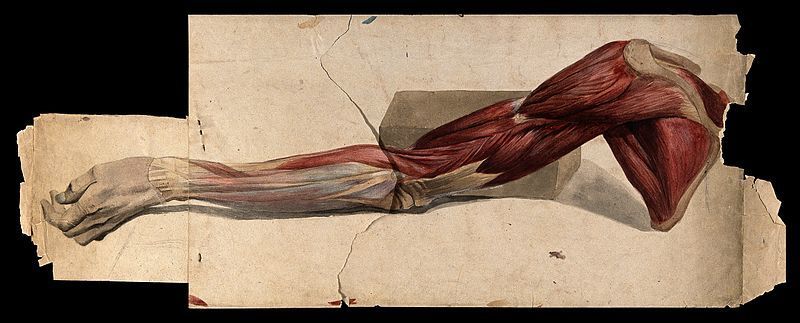
Myofibrillar density – It has been known for decades that although muscles can expand in size (i.e. outwards), they can also become denser, increasing the amount of usable muscle within the same area (16).
4) Skill Development
The principle of specificity is often heralded as the key to strength. Many people believe it is the number one priority and should be considered before any other variables. I won’t even reference research on this one. It’s obvious to most that the more you do something, the better you will become at it. Head on over to (https://www.strength-forge.com/strength-training-variations/) to learn more about this phenomenon.
Keep It Simple
The muscle is the engine, the nervous system is the driver and the connective tissue are the wheels themselves.
Put someone who doesn’t know how to drive in a formula 1 car (i.e. Usain Bolt’s body). It may have the greatest engine in the world. But it won’t accomplish its purpose very effectively until it is trained.
Larger muscles have a larger potential to produce force, but first, you have to learn how to use it.
Due to the golden era of bodybuilding and the phenomenal pioneering work of Arnold Schwarzenegger to bring awareness to the physical state of the human body, most of the current knowledge with lifting weights is centred around lifting to stimulate muscle tissue, with little care and regard for how this influences the nervous system.
As a result, people are unaware of how training can be manipulated to increase in the involvement of the nervous system and limit the gains in muscle size.
Now conversely, put Lewis Hamilton in a 3-wheeler, it won’t go very fast round a track. Despite his racing prowess.
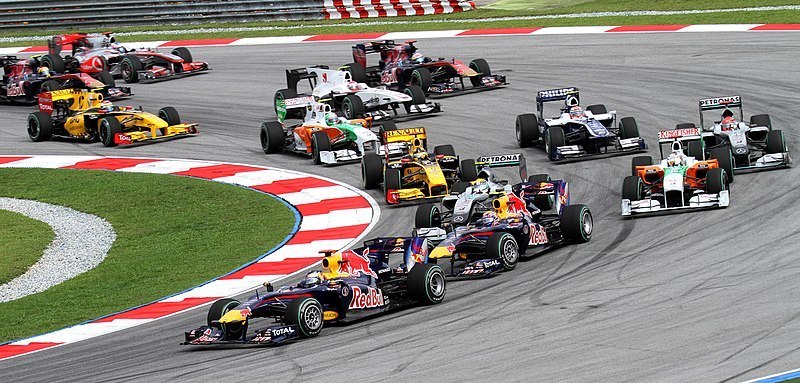
The pursuit of muscle mass is a noble one. And to truly be the strongest you would ever be able to be, both ends of the spectrum are required.
It’s simply about balancing the two, depending on your own circumstances.
HOW?
Learn the implementation.
Reps Lower + More Sets
As I’ve spoken about many times before, reducing the number of reps not only allows for more weight to be lifted, with heavier weight resulting in larger motor units being recruited for strength (9), but it also reduces the negative effects of fatigue on technique, allowing for the refinement of the motor pattern in question.
It is also important to manage the total training volume you’re performing, due to heavy lifting generating high degrees of mechanical tension and therefore being a key driver for muscular hypertrophy.
More Rest Between Sets
Research has shown that prolonging the rest time (of up to 4 minutes) between sets, allowed subjects to maintain barbell velocity, power output and force production (20), compared to shorter rest intervals.
“I’m not spending 4 minutes resting! How much time do you think I’ve got?!”

I know, sounds crazy, but there’s a simple solution for that one. Just do another exercise (that’s incurs little to not fatigue e.g. stretching, postural correction, coordination based etc.) in the meantime. Making your time in the gym much more effective.
Or, you may also say,
“4 minutes! How much rest time do you need for 3 reps?”
When building relative strength, you must lift as hard as possible. That may sound odd but ask yourself this question. When was the last time you did a squat (even if it’s just bodyweight) and really drove through your legs as hard as you can? When was the last time you performed a deadlift and pushed the floor away as if driving down the earth beneath you?
It’s an evolutionarily developed program within every human to avoid maximal work and perform every task with the least effort required to complete it. After all, why else would we waste the energy?
If you’re unsure as to how to truly tap into the potential of the muscle and exert maximal force with submaximal weight, you won’t even know what weight you’re capable of lifting.
Full Body Movement
Now I’m sure you will strain when you train, and work hard don’t get me wrong, but as mentioned above, you may actually be operating at 10% the entire time. Regardless of the effort you’re putting in.
And this is because every exercise is a full body movement – even a bicep curl.
Try this out for me next time you’re in the gym.
- Perform a bicep curl as you normally would.
- Next, squeeze the weight as hard as you physically can whilst curling.
- Now, brace your stomach as hard as you can, take a diaphragmatic breath and perform another rep.
- Finally, squeeze your glutes as hard as you can, whilst doing all the above, and curl.
I can 100% guarantee when done correctly, the final rep felt just as easy if not easier than the 1st, despite being the 4th rep.
Another, even more applicable test (because let’s face it, why are you curling in the first place) is the back squat.
- Place the bar on your back as you usually would and perform a rep.
- Next, squeeze as hard as you can.
- Now, brace your stomach and breathe into your diaphragm.
- Finally pull the bar across your back and squeeze your elbows into your sides.
Again, I can guarantee the final rep (although initially uncomfortable) will have felt easier overall.
These mechanisms I call ‘tension factors” are the keys to harnessing the neurological connections and myofascial links between muscles. And are the key to building relative strength.
Isometric Training
Probably my most and least favourite form of training for building relative strength. I love it because of the sheer benefits it can bring. From building inhuman strength in a short space of time, to be a key driver for thickening tendons it’s unbelievable.
However, I hate it. Because it’s sickeningly painful at times and makes you feel like your head is going to explode 95% of the time.

Or at least, if you perform it with maximal intensity it does.
Briefly, isometric training refers to exerting force in the muscle, with no change in joint position. In other words, you don’t actually move. An example of isometric training would be to set a bar at chest height with 500kg of weight. Step under and push as hard as you can.
It won’t move, but you can sure as hell bet that your muscle will recruit every motor unit it has to get it to budge. Although the body is lazy, it does an excellent job of scaling itself to match the demand imposed upon it.
If it senses it only needs to produce 400N of force to lift a weight, it will instinctively aim to produce roughly 400N and save the rest of it’s energy just in case.
However, in the case of isometric training it will continue to ramp up, recruiting larger motor units, following the Hennemann Size Principle (9), in a bid to create motion.

Extensive research has shown isometric training to not only drastically stiffen tendons (2) but also significantly increase relative strength in exercises such as the squat in as little as 4-6 weeks (8, 13). Look forward to the future article to learn more about how to apply isometric exercise into your training.
Speed/Power Training
Lifting as explosively as you physically can is also a great way to increase relative strength and avoid the increase in muscle size.
Muscle hypertrophy is largely influenced by time under tension leading to the development of many protocols that purposefully slow tempo of movement down.
However, when you lift quick, the total time decreases. Yet you still stimulate the recruitment of larger motor units; with the Hennemann Size principle stating speed of contraction to show a similar response as increasing load (11).
Summary
- There are several reasons to build relative strength, namely delaying aging and being able to reap the endless rewards of greater strength, without having to increase muscle mass if you don’t want to.
- Relative strength is most commonly calculated as weight lifted/body weight, but can be also be calculated by specific tension or normalized muscle force.
- The body is capable of adapting tissues in a variety of ways in order to exert more force, outside of the realms of simply creating more muscle.
- Lengthening the rest time, decreasing the number of reps and creating tension in other areas of the body is a greater way to increase your force production when lifting.
- Training methods such as isometric training and explosive work are a great way to develop the strength without the size.
Reference List
- Brandenburg, J. P., & Docherty, D. (2002). The effects of accentuated eccentric loading on strength, muscle hypertrophy, and neural adaptations in trained individuals. Journal of Strength and Conditioning Research, 16(1), 25-32
- Burgess, K. E., Connick, M. J., Graham-Smith, P., & Pearson, S. J. (2007). Plyometric vs. isometric training influences on tendon properties and muscle output. Journal of Strength and Conditioning Research, 21(3), 986
- Cavagna, G. A., Citterio, G., & Jacini, P. (1981). Effects of Speed and Extent of Stretching on the Elastic Properties of Active Frog Muscle. Journal Of Experimental Biology, 91(1), 131-143
- do Carmo Carvalhais, V. O., de Melo Ocarino, J., Araújo, V. L., Souza, T. R., Silva, P. L. P., & Fonseca, S. T. (2013). Myofascial force transmission between the latissimus dorsi and gluteus maximus muscles: an in vivo experiment. Journal of biomechanics, 46(5), 1003-1007
- Erskine, R. M., Jones, D. A., Maffulli, N., Williams, A. G., Stewart, C. E., & Degens, H. (2011). What causes in vivo muscle specific tension to increase following resistance training?. Experimental physiology, 96(2), 145-155
- Erskine, R. M., Jones, D. A., Williams, A. G., Stewart, C. E., & Degens, H. (2010). Inter-individual variability in the adaptation of human muscle specific tension to progressive resistance training. European journal of applied physiology, 110(6), 1117-1125
- Erskine, R. M., Jones, D. A., Williams, A. G., Stewart, C. E., & Degens, H. (2010). Resistance training increases in vivo quadriceps femoris muscle specific tension in young men. Acta physiologica, 199(1), 83-89.
- Giorgi, A., Wilson, G. J., Weatherby, R. P., & Murphy, A. J. (1998). Functional Isometric Weight Training: Its Effects on the Development of Muscular Function and the Endocrine System Over an 8-Week Training Period. The Journal of Strength & Conditioning Research, 12(1), 18-25 Health Sciences.
- Henneman, E., Somjen, G., & Carpenter, D. O. (1965). Excitability and inhibitibility of motoneurons of different sizes. Journal of neurophysiology, 28(3), 599-620.
- Jones, D. A., Rutherford, O. M., & Parker, D. F. (1989). Physiological changes in skeletal muscle as a result of strength training. Quarterly journal of experimental physiology, 74(3), 233-256.
- Mendell, L. M. (2005). The size principle: a rule describing the recruitment of motoneurons. Journal of Neurophysiology, 93(6), 3024-3026
- Myers, T. W. (2013). Anatomy Trains E-Book: Myofascial Meridians for Manual and Movement Therapists. Elsevier
- O’shea, K. L., & O’shea, J. P. (1989). Functional Isometric Weight Training: Its Effects on Dynamic and Static Strength. The Journal of Strength & Conditioning Research, 3(2), 30-33
- Pansarasa, O., Rinaldi, C., Parente, V., Miotti, D., Capodaglio, P., & Bottinelli, R. (2009). Resistance training of long duration modulates force and unloaded shortening velocity of single muscle fibres of young women. Journal of Electromyography and Kinesiology, 19(5), e290-e300
- Parente, V., D’Antona, G., Adami, R., Miotti, D., Capodaglio, P., De Vito, G., & Bottinelli, R. (2008). Long-term resistance training improves force and unloaded shortening velocity of single muscle fibres of elderly women. European journal of applied physiology, 104(5), 885
- Penman, K. A. (1970). Human striated muscle ultrastructural changes accompanying increased strength without hypertrophy. Research Quarterly. American Association for Health, Physical Education and Recreation, 41(3), 418-424
- Ramaswamy, K. S., Palmer, M. L., Van Der Meulen, J. H., Renoux, A., Kostrominova, T. Y., Michele, D. E., & Faulkner, J. A. (2011). Lateral transmission of force is impaired in skeletal muscles of dystrophic mice and very old rats. The Journal of physiology, 589(5), 1195-1208.
- Reeves, N. D., Maganaris, C. N., & Narici, M. V. (2003). Effect of strength training on human patella tendon mechanical properties of older individuals. The Journal of physiology, 548(3), 971-981
- Shoepe, T. C., Stelzer, J. E., Garner, D. P., & Widrick, J. J. (2003). Functional adaptability of muscle fibers to long-term resistance exercise. Medicine & Science in Sports & Exercise, 35(6), 944-951
- Tibana, R. A., Vieira, D. C., Tajra, V., Bottaro, M., Willardson, J. M., de Salles, B. F., & Prestes, J. (2013). Effects of rest interval length on Smith machine bench press performance and perceived exertion in trained men. Perceptual and motor skills, 117(3), 682-695.
- Vikne, H., Refsnes, P. E., Ekmark, M., MedbØ, J. I., Gundersen, V., & Gundersen, K. (2006). Muscular performance after concentric and eccentric exercise in trained men. Medicine and science in sports and exercise, 38(10), 1770-1781


